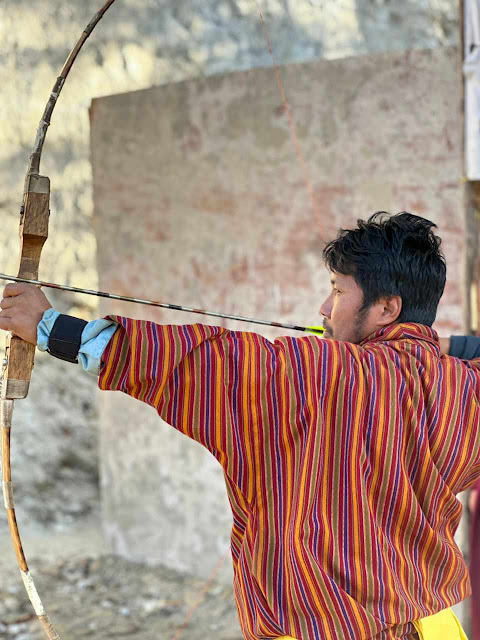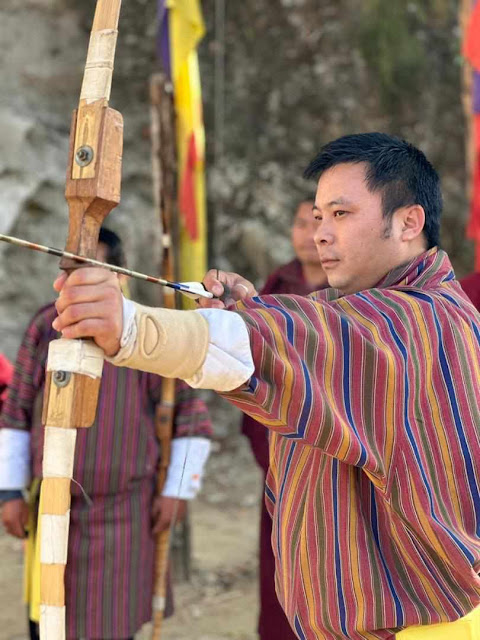HISTORY ABOUT FIG TREE
Rollpa, Bhutan's first board game
Rollpa, Bhutan’s first board game
 |
| ROLLPA GAME |
Players start the game by arranging the nine domains of GNH namely the living standards, education, health, environment, psychological well-being, community vitality, time-use, good governance and culture in front of them.
They then take turns rolling a die and picking a card each. Each card gives an option for a player to earn merits.
However, you cannot win if you get an indulgence or abstinence card, which are represented by monkey and elephant cards respectively.
The game is won by earning merits for each nine domains.
“What makes the game very fun and engaging to play is that it is a pretty unique product and it is Bhutanese through and through because while we are playing the game, not only is it educational it is also very fun. When we talk about how it is a Bhutanese game, unlike other games that I have played before, this game does not have one winner and this game does not have losers. Everyone can win something,” said Sonam Pem Tshoki, a Rollpa player.
The game explores the possibility of using board game mechanics to talk about the fundamentals of GNH development philosophy.
It has been developed over four years by a game enthusiast called Namdrul who is now planning to bring it out into the international market as well.
Currently, it is sold at the CSI Market in Thimphu at around 2000 ngultrum per box.
“On part of the GNH values, it mainly teaches you about the nine domains. We do learn about GNH in schools, however we learn more through the game such as how psychological wellbeing contributes to GNH values,” said Sangay Thinley, another Rollpa player.
The game shows the challenges of achieving balance in life. This aspect of the game can be incorporated in real life teaching players that happiness is a balancing act.
source BBS
Tshering Deki
ONLINE LAND TAX PAYMENT
MELA IN BHUTAN
This is how a typical Bhutan Fun and Fair (Mela in Bhutanese) looks. This 2023 picture gallery from Phuntsholing Kaja Throm is one of the best neat Mela setups on the open 3rd top floor ground which has crowded geather Games like Dart heating individual highest point related to world Olympic Game. Photos of various products stalls and food stall setups can also be seen inside. Mela’s list of rides, setup, and product stalls is all in the one-page article here.
Meaning of OM TARE TUTARE SOHA
We need to know the meaning of Tara’s mantra, OM TARE TUTTARE TURE SOHA, when we recite it. OM TARE means “She is the One who swiftly comes to help.” TUTTARE means “She is the One who dispels all my fear.” And TURE means “She is the One who fulfils all my wishes.” One needs to be fully aware of the meaning of the three aspects of her mantra and be confident that she has the ability to really help; otherwise one would resemble a bird merely twittering in the treetop while reciting her mantra.
Without the syllables OM at the beginning and SOHA at the end, her mantra consists of three Sanskrit words that describe her Buddha activities.
TARE stands for her Tibetan name Myur-ma dPha’-mo and means “She is the swift heroine.” Myur-ma means ”swift,” i.e., she doesn’t hesitate and helps living beings who supplicate her very fast. dPha’-mo is the femine gender for the term “hero,” which means to say that she is extremely determined and courageous to help those who pray to her.
TUTTARE is the Sanskrit term for her Tibetan name ‘Jigs-pa Sel-ma and means “She is the One who dispels fear.” She has the ability to dispel any fear that we have, and we do constantly live our lives driven by fear of one kind or another. For example, wealthy people live in fear of robbers and thieves and poor people fear not being able to find a job. After a couple gives birth to an offspring, they fear that their baby will get into trouble. There are so many kinds of fear that are obstacles, for instance, fear of not accomplishing a goal or of not being able to finish a job. This has nothing to do with the work itself, rather it is fear that is created in one’s own mind. Problems are created by hopes and fears that everyone has. For example, if one is given medicine when one is sick, one has fears and doubts that it will help. Whether ones fear is strong or weak, it is very helpful to supplicate Arya Tara, because she is able to dispel and eradicate any fear that one may have.
TURE is the Sanskrit term in her mantra for her Tibetan name ‘Död-kün-sbyin-pa’i-Drolma and means “She is the Liberator who fulfills all wishes.” We all have wishes and experience obstacles while trying to achieve our aims. Therefore, if we supplicate Arya Tara and ask her to help us overcome our obstacles, then our wishes will be fulfilled. So, she is the One who grants all wishes.
--- Venerable Chöje Lama Phuntsok
calligraphy by 17th Gyalwa Karmapa Ogyen Trinley Dorje
JOENLA DHATSEP, RADHI
 |
| FOR EXCAVATION PAID TO CHETEN |
 |
| PAYMENT RECEIPT FROM CHETEN |
Archery was adopted as the National game of Bhutan in 1971 when Bhutan got the membership of United Nations. Though this game was played before adopting as national sport, it relatively gained popularity among Bhutanese gents. The length between two target is approximately around 145 meters, with 3 feet tall and 11 inches wide wooden target. It was mainley played during religious and local festival (like new years , nyilo and lomba ) but now it's most popular game during weekend of every archery ranges is filled with noise of joy and songs and draws lots of witnesser.
There is two types of bow
1. Bamboo made
2. Compound made
The picture shows Bamboo made bow and team of Joenla village under Tashigang Dzongkhag
GAME AND ENTERTAINMENT
JHANDI MUNDA GAME
Jhandi Munda is an Indian board game that's played with 6 six-sided dice. This game is said to have originated in the north-east part of India. It is a "game of luck" that is now gaining great popularity among players who wish to win real money.
It is an exciting and thrilling game, which makes it very appealing to players who love the adrenaline rush. If you want to give this game a try but don't know where to start or how to win real money at Jhandi Munda. The bssic explanation of Jhandi Munda, the strategies, and tips & tricks needed in order to increase your chances of winning big.
Jhandi Munda is not just a popular game in India, all though variations of the game are also played in Nepal, Bangladesh, Sri Lanka, Bhutan and United Kingdom. Jhandi Munda is known as “Crown and Anchor” in United Kingdom and as “Langur Burja” in Nepal.
The Jhandi Munda represent six symbols are Spade, Club, Diamond, Heart, Crown, and Flag. There are total of 6 dice in Jhandi Munda. Each of the six-sided dice is painted with the above mentioned six symbols.
1. What do Jhandi flag represent?
The flag represent various deities and are place in the ground as a symbol of the deity's victory, or good over evil and were parts of religious ceremonies, symbols of faith and ways to show pride.
World’s Richest Country 2023, [ Top 10 ] Richest Countries in the World
World’s Richest Country
World's richest country by many, In response to the question asked in relation to this, let us tell you that the most widely accepted way to determine the prosperity of any country is the per capita GDP. Even though India’s GDP is 3 trillion but still India is not in the line of World’s Richest Country.
Richest Country in Asia
| Article Caption | World’s Richest Country |
| Category | Compare of Rich Countries |
| Year | 2023 |
| Super Rich Country in 2023 | Katar |
| Super Rich Country in 2050 | China |
| India Place in World’s Richest Country in 2050 | 3rd |
| Top 10 Richest Countries |
|











































